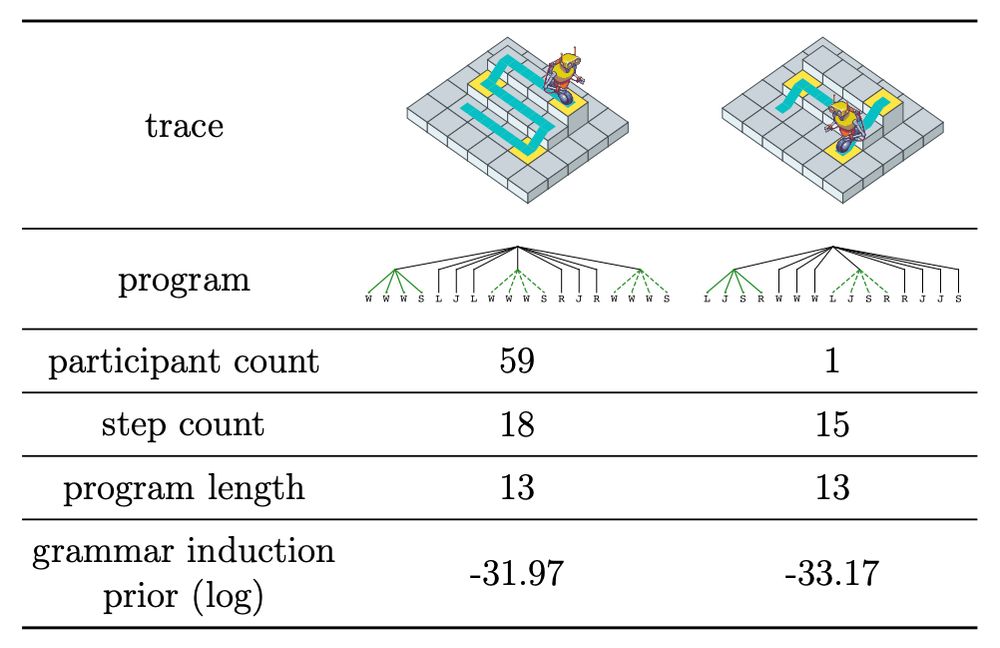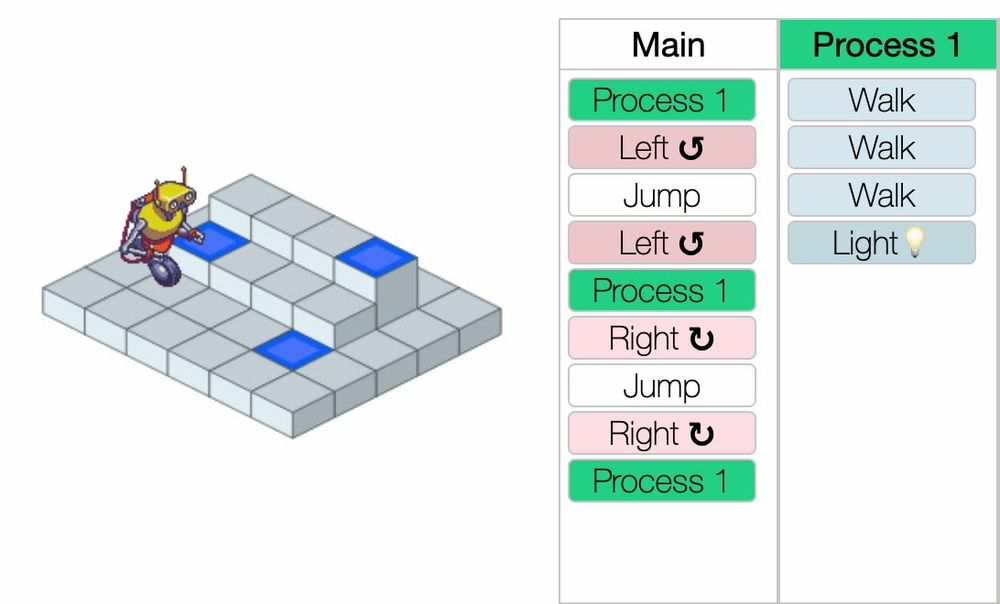Carlos G. Correa
@cgcorrea.bsky.social
postdoc with Marcelo Mattar - https://carlos.correa.me/
My paper on hierarchical plans is out in Cognition!🎉
tldr: We ask participants to generate hierarchical plans in a programming game. People prefer to reuse beyond what standard accounts predict, which we formalize as induction of a grammar over actions.
authors.elsevier.com/a/1kBQr2Hx2x...
tldr: We ask participants to generate hierarchical plans in a programming game. People prefer to reuse beyond what standard accounts predict, which we formalize as induction of a grammar over actions.
authors.elsevier.com/a/1kBQr2Hx2x...

December 3, 2024 at 3:37 PM
My paper on hierarchical plans is out in Cognition!🎉
tldr: We ask participants to generate hierarchical plans in a programming game. People prefer to reuse beyond what standard accounts predict, which we formalize as induction of a grammar over actions.
authors.elsevier.com/a/1kBQr2Hx2x...
tldr: We ask participants to generate hierarchical plans in a programming game. People prefer to reuse beyond what standard accounts predict, which we formalize as induction of a grammar over actions.
authors.elsevier.com/a/1kBQr2Hx2x...
We find that people have a bias towards reuse, beyond the reuse that naturally occurs when minimizing program length. Drawing from theories of word learning, we account for this by modeling participants' program-writing as if they were creating & using an action grammar.
4/7
4/7

February 13, 2024 at 4:33 PM
We find that people have a bias towards reuse, beyond the reuse that naturally occurs when minimizing program length. Drawing from theories of word learning, we account for this by modeling participants' program-writing as if they were creating & using an action grammar.
4/7
4/7
Importantly, a program isn't just a sequence of instructions. Participants can define and use parts of programs (called processes), making it possible to write shorter, more compact programs.
3/7
3/7

February 13, 2024 at 4:33 PM
Importantly, a program isn't just a sequence of instructions. Participants can define and use parts of programs (called processes), making it possible to write shorter, more compact programs.
3/7
3/7
We use a process-tracing paradigm where people create hierarchical plans. Based on the educational game Lightbot, research participants drag and drop instructions to write programs. Lightbot follows these instructions, with the goal of activating all lights.
2/7
2/7

February 13, 2024 at 4:32 PM
We use a process-tracing paradigm where people create hierarchical plans. Based on the educational game Lightbot, research participants drag and drop instructions to write programs. Lightbot follows these instructions, with the goal of activating all lights.
2/7
2/7
Human behavior is hierarchically structured. But what determines *which* hierarchies people use? In a preprint, we run an experiment where people create programs that correspond to hierarchies, finding that people prefer structures with more reuse.
arxiv.org/abs/2311.18644
1/7
arxiv.org/abs/2311.18644
1/7


February 13, 2024 at 4:30 PM
Human behavior is hierarchically structured. But what determines *which* hierarchies people use? In a preprint, we run an experiment where people create programs that correspond to hierarchies, finding that people prefer structures with more reuse.
arxiv.org/abs/2311.18644
1/7
arxiv.org/abs/2311.18644
1/7

